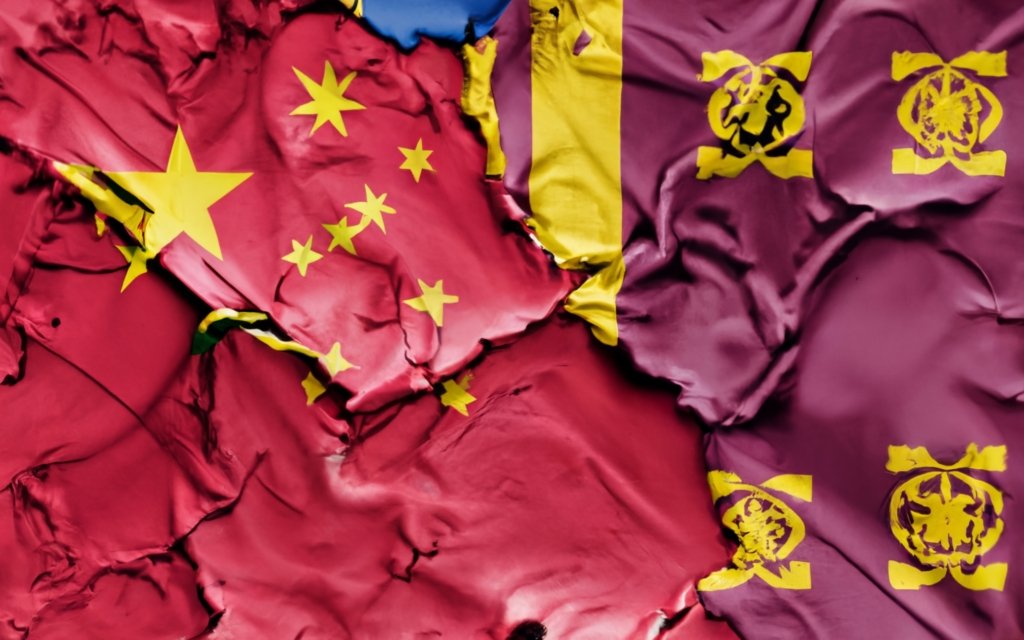China and Sri Lanka are two important trading partners in Asia, with a long history of economic and cultural ties. The bilateral trade volume between the two countries reached $5.6 billion in 2020, an increase of 9.2% year-on-year. China is Sri Lanka’s largest source of imports, accounting for 22% of the total. Sri Lanka is also a key destination for China’s Belt and Road Initiative, with several major infrastructure projects underway or planned.
If you are looking to ship goods from China to Sri Lanka, you may have many questions about the shipping process, such as:
- What are the shipping routes between China and Sri Lanka?
- What types of cargo are transported between the two countries?
- How much does it cost to ship from China to Sri Lanka?
- What are the regulations and documentation required for China to Sri Lanka shipping?
- How to choose a shipping method – air freight vs. sea freight?
- What are some tips for successful China to Sri Lanka shipping?
- How does the customs clearance process work in China and Sri Lanka?
- What are some common challenges in China to Sri Lanka shipping and how to overcome them?
In this article, we will answer these questions and provide you with a comprehensive guide on China to Sri Lanka shipping. Whether you are a business owner, an importer, or an individual, this article will help you understand the basics of shipping from China to Sri Lanka and make informed decisions.
Shipping Routes Between China and Sri Lanka

There are two main modes of transportation for shipping from China to Sri Lanka: air freight and sea freight. Depending on your budget, time frame, and cargo type, you can choose the most suitable option for your needs.
Air Freight
Air freight is the fastest and most reliable way to ship goods from China to Sri Lanka. It usually takes between 2-3 days to deliver your cargo by air. However, air freight is also the most expensive option, as it charges by weight rather than volume. Air freight is ideal for small, urgent, or high-value shipments that require special handling or temperature control.
The main airports for air freight in China are Beijing Capital International Airport (PEK), Shanghai Pudong International Airport (PVG), Guangzhou Baiyun International Airport (CAN), Shenzhen Bao’an International Airport (SZX), and Hong Kong International Airport (HKG). The main airports for air freight in Sri Lanka are Bandaranaike International Airport (CMB) in Colombo, Mattala Rajapaksa International Airport (HRI) in Hambantota, and Jaffna International Airport (JAF) in Jaffna.
There are several airlines that operate flights between China and Sri Lanka, such as Air China, China Eastern Airlines, China Southern Airlines, Cathay Pacific Airways, SriLankan Airlines, Emirates, Etihad Airways, Qatar Airways, Turkish Airlines, and Singapore Airlines. You can check their websites or use online platforms like Skyscanner or Expedia to compare flight schedules and prices.
Sea Freight
Sea freight is the most economical way to ship large volumes of goods from China to Sri Lanka. It usually takes between 10-20 days to deliver your cargo by sea. However, sea freight is also the slowest and least predictable option, as it is subject to weather conditions, port congestion, customs clearance, and other factors that may cause delays. Sea freight is ideal for bulky, heavy, or low-value shipments that do not have strict deadlines.
The main ports for sea freight in China are Shanghai Port, Ningbo-Zhoushan Port, Shenzhen Port, Guangzhou Port, Qingdao Port, Tianjin Port, Dalian Port, Xiamen Port, and Hong Kong Port. The main ports for sea freight in Sri Lanka are Colombo Port, Hambantota Port, Galle Port, Trincomalee Port, and Kankesanthurai Port.
There are several shipping lines that operate services between China and Sri Lanka, such as COSCO Shipping Lines, Maersk Line, MSC Mediterranean Shipping Company, CMA CGM Group, Evergreen Line, Hapag-Lloyd, OOCL, Yang Ming Marine Transport Corporation, and ZIM Integrated Shipping Services. You can check their websites or use online platforms like Freightos or Flexport to compare shipping rates and schedules.
Types of Cargo Transported Between China and Sri Lanka

The types of cargo transported between China and Sri Lanka vary depending on the demand and supply of each country. According to the latest data from the United Nations Comtrade Database, the top 10 products imported by Sri Lanka from China in 2020 were:
- Electrical machinery and equipment
- Machinery and mechanical appliances
- Iron and steel
- Vehicles and parts
- Plastics and articles thereof
- Articles of apparel and clothing accessories
- Furniture and bedding
- Ceramic products
- Rubber and articles thereof
- Footwear and parts
The top 10 products exported by Sri Lanka to China in 2020 were:
- Tea and spices
- Apparel and clothing accessories
- Rubber and articles thereof
- Coconut, palm kernel, and babassu oil
- Fish and crustaceans
- Edible fruit and nuts
- Mineral fuels and oils
- Copper and articles thereof
- Optical, photographic, and medical instruments
- Precious stones and metals
Depending on the type of cargo you want to ship from China to Sri Lanka, you may need to consider different factors such as packaging, labeling, loading, unloading, storage, transportation, and insurance. You may also need to comply with different regulations and documentation requirements for each product category. We will discuss these aspects in more detail in the following sections.
Costs of Shipping from China to Sri Lanka

The costs of shipping from China to Sri Lanka depend on several factors, such as:
- The mode of transportation (air freight or sea freight)
- The weight and volume of the cargo
- The origin and destination of the shipment
- The type and value of the goods
- The season and demand of the market
- The customs duties and taxes applicable to the goods
To give you a general idea, here are some indicative prices for shipping from China to Sri Lanka based on the data from Eurosender, a platform that offers fast and easy shipping services from China to Sri Lanka:
| Mode | Weight | Volume | Price |
|---|---|---|---|
| Air freight | 10 kg | 40 x 40 x 40 cm | €118.09 + VAT |
| Air freight | 100 kg | 400 x 400 x 400 cm | €1,180.90 + VAT |
| Sea freight | 1 CBM | 1000 x 1000 x 1000 cm | €200 – €300 |
| Sea freight | 20 CBM | 20’ container | €1,000 – €1,500 |
These prices are only for reference and may vary depending on the specific details of your shipment. To get a more accurate quote for your shipping needs, you can contact us or use our online tool to get a free estimate.
Regulations and Documentation Required for China to Sri Lanka Shipping

Shipping from China to Sri Lanka involves crossing international borders, which means you need to follow certain regulations and provide proper documentation for your cargo. These regulations and documentation may differ depending on the type and value of your goods, as well as the customs authorities of each country.
Before shipping your goods from China to Sri Lanka, you need to comply with the regulations and documentation required by both countries. These include:
- Export declaration: This is a document that declares the details of your shipment, such as the exporter, the importer, the description, the quantity, the value, the HS code, and the origin of the goods. You need to submit this document to the customs authorities in China before exporting your goods.
- Commercial invoice: This is a document that shows the transaction between the seller and the buyer, such as the names, addresses, contact details, terms of payment, terms of delivery, and total amount. You need to provide this document to the customs authorities in Sri Lanka for valuation and taxation purposes.
- Packing list: This is a document that lists the contents of your shipment, such as the number of packages, the weight, the dimensions, and the marks and numbers. You need to attach this document to your shipment for identification and verification purposes.
- Bill of lading (B/L) or air waybill (AWB): This is a document that serves as a contract of carriage and a receipt of goods between the carrier and the shipper. It also contains important information such as the consignee, the notify party, the port of loading, the port of discharge, the vessel name, the voyage number, and the freight charges. You need to present this document to claim your goods at the destination port or airport.
- Certificate of origin (CO): This is a document that certifies the origin of your goods, such as the country where they were produced or manufactured. You may need this document to claim preferential tariff treatment under the Free Trade Agreement (FTA) between China and Sri Lanka.
- Other documents: Depending on the nature and value of your goods, you may also need other documents such as an inspection certificate, a health certificate, a phytosanitary certificate, a fumigation certificate, an insurance certificate, etc.
Tips for successful China to Sri Lanka shipping

To ensure a smooth and hassle-free shipping process from China to Sri Lanka, here are some tips that you can follow:
- Plan ahead: It is advisable to plan your shipment well in advance to avoid any last-minute issues or delays. You should also check the availability and schedule of your preferred carrier and service level.
- Compare rates: It is wise to compare different rates and options from various shipping providers and platforms to find the best deal and service for your shipment. You can also use online tools such as Eurosender to get instant quotes and book your shipment easily and securely.
- Pack properly: It is important to pack your goods properly to protect them from damage or loss during transit. You should use sturdy and durable boxes, bubble wrap, foam peanuts, tape, labels, etc. You should also avoid overpacking or underpacking your boxes, as this can cause problems with the weight and dimensions of your shipment.
- Label clearly: It is essential to label your shipment clearly and correctly to avoid any confusion or misdelivery. You should include the following information on your labels: sender’s name, address, and contact details; receiver’s name, address, and contact details; description and value of the goods; HS code and origin of the goods; shipping method and service level; tracking number and barcode; special instructions or warnings (if any).
- Track your shipment: It is advisable to track your shipment regularly to monitor its status and location. You can use the tracking number and barcode provided by your carrier or platform to access the tracking information online or via phone or email. You should also keep in touch with your receiver and notify them of any changes or delays in your shipment.
- Prepare for customs: It is crucial to prepare for customs clearance in both China and Sri Lanka to avoid any penalties or delays. You should have all the required documents ready and complete, such as the export declaration, the commercial invoice, the packing list, the B/L or AWB, the CO, etc. You should also pay attention to the customs duties and taxes applicable to your goods, as well as the import restrictions and prohibitions in both countries.
Customs clearance process in China and Sri Lanka

- The customs clearance process in China and Sri Lanka involves the following steps:
- Submission of documents: The exporter or their agent submits the export declaration and other documents to the customs authorities in China for verification and approval. The importer or their agent submits the commercial invoice and other documents to the customs authorities in Sri Lanka for valuation and taxation.
- Inspection of goods: The customs authorities in both countries may inspect the goods physically or electronically to check their quantity, quality, value, origin, etc. They may also conduct random checks or select shipments based on risk assessment.
- Payment of duties and taxes: The importer or their agent pays the customs duties and taxes levied on the goods according to the tariff rate and value of the goods. The customs authorities in Sri Lanka may also charge other fees such as port charges, terminal handling charges, etc.
- Release of goods: The customs authorities in both countries issue a release order for the goods after completing the clearance process. The carrier or their agent delivers the goods to the importer or their designated location.
Common challenges in China to Sri Lanka shipping and how to overcome them

- Shipping from China to Sri Lanka may encounter some challenges that can affect the efficiency and effectiveness of your shipment. Some of these challenges are:
- Language barrier: The official languages in China are Mandarin and Cantonese, while the official languages in Sri Lanka are Sinhala and Tamil. There may be communication difficulties between the shippers, carriers, agents, customs officials, etc. To overcome this challenge, you can use online translation tools or hire professional translators to help you with your communication needs.
- Cultural differences: The business cultures in China and Sri Lanka may differ in terms of etiquette, norms, values, expectations, etc. There may be misunderstandings or conflicts that can affect your business relationship and trust. To overcome this challenge, you can learn about the cultural differences between the two countries and respect their customs and traditions. You can also use online platforms such as Eurosender that offer cross-cultural support and guidance for your shipping needs.
- Legal issues: The laws and regulations governing trade and shipping in China and Sri Lanka may differ in terms of tariffs, quotas, licenses, permits, standards, etc. There may be legal disputes or penalties that can affect your shipment. To overcome this challenge, you can consult with legal experts or trade associations to help you with your legal compliance and representation.
Conclusion and final thoughts on China to Sri Lanka shipping
Shipping from China to Sri Lanka can be a rewarding and profitable venture if you follow the best practices and tips mentioned in this article. You can benefit from the growing trade and cooperation between the two countries, as well as the diverse and dynamic markets in both regions. You can also leverage the advantages of different shipping methods and services to suit your specific needs and preferences.


